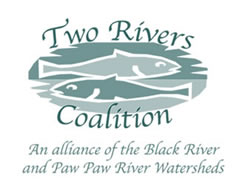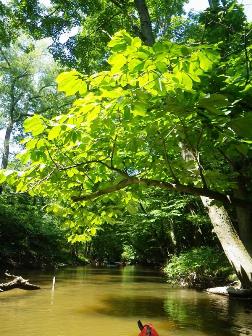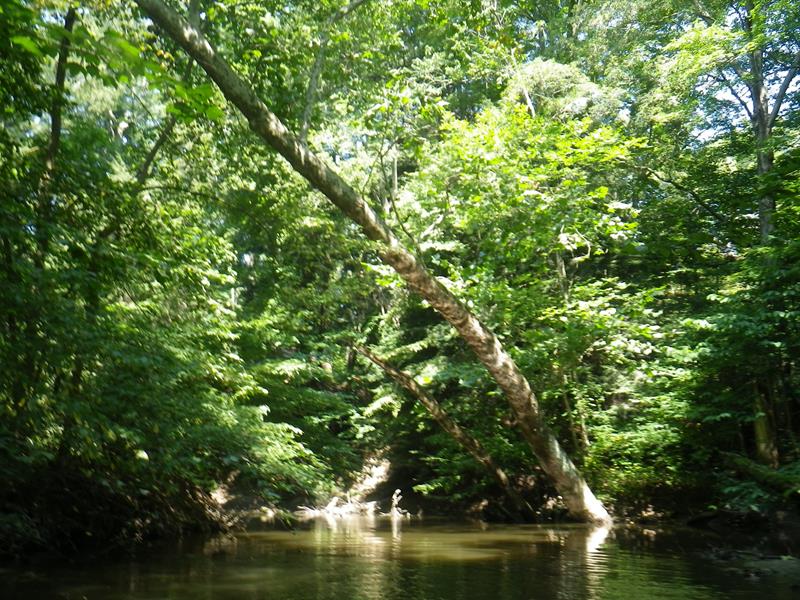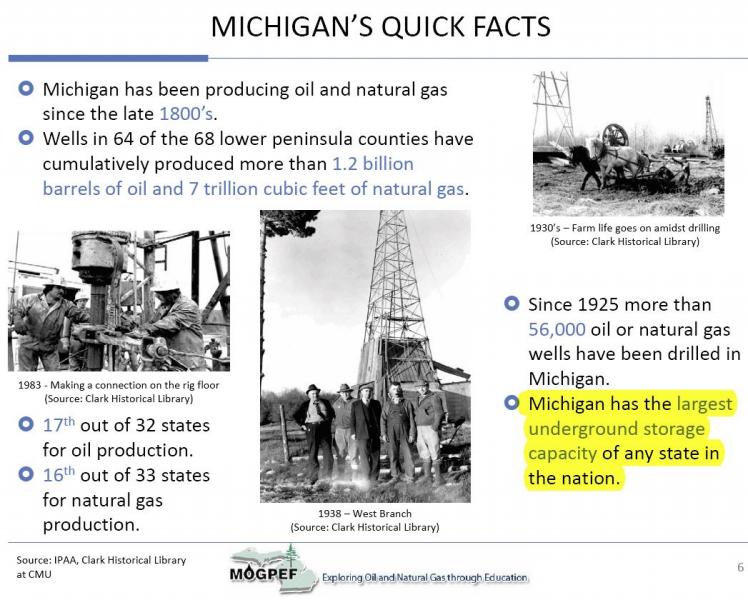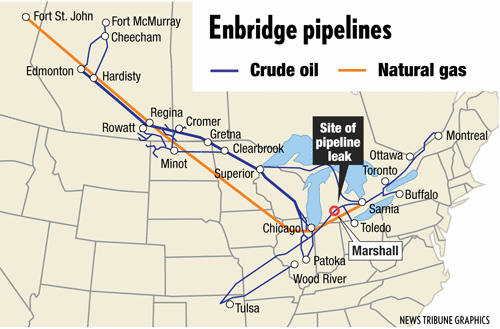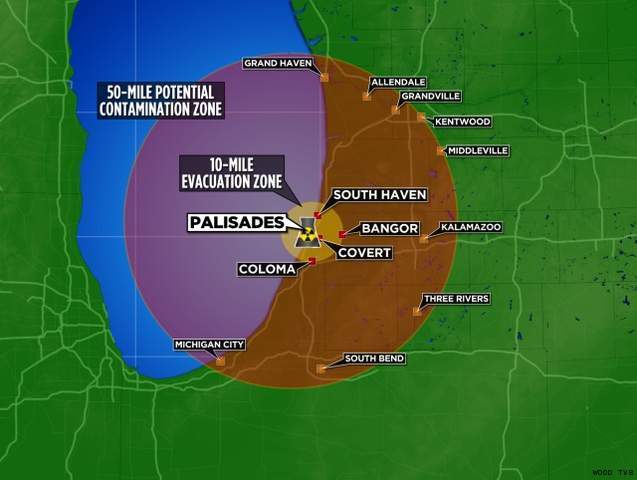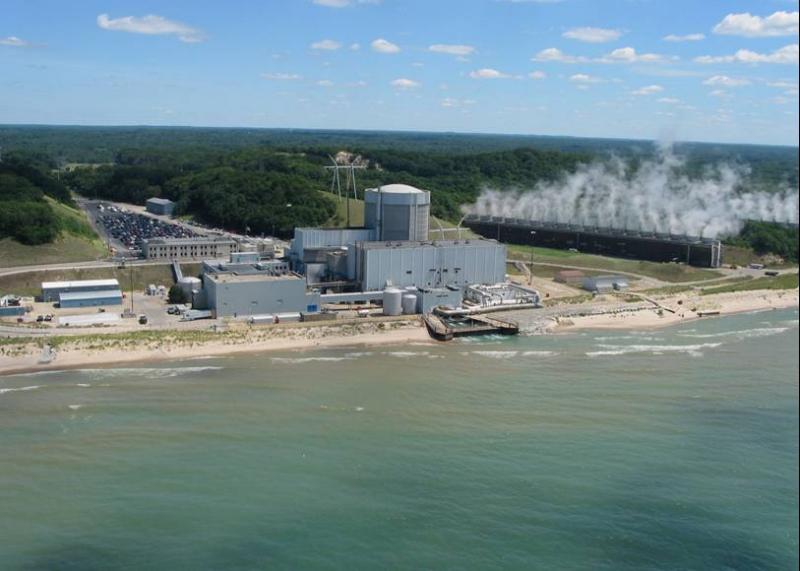Home>Let It Flow
Let It Flow Blog
Where is the fun in blogging if you are constantly required to have a consistent theme? I hereby declare myself free from the artificial constraints of thematic consistency for the remainder of this post. Let the randomness begin!
Before we get to the doom and gloom, let’s celebrate some good news involving our friends at the Bangor South Haven Heritage Water Trail Association [Oh my god, what a mouthful, try saying that 10 times fast …which is why they go by their acronym, B/SH HWTA]. They have been working patiently for many years trying to clear a paddle trail through the most difficult section of the Black River downstream from C.R. 687 to C.R. 380, which they affectionately refer to as the “Wilderness section”.
Well, earlier this month, they were finally successful and it is now possible to paddle all the way from Bangor to South Haven [but not in one day for normal people]. Last week I paddled the newly opened stretch of the Black and had a blast. My group put in at the access on C.R. 687 and floated down to the bridge at 66th Street which took us about four hours. I was very impressed with the quality of the floodplain forest which formed a canopy overhead almost the entire trip. There is no better way to really appreciate our fresh water treasure than to go out and paddle through a pristine area.
While we are congratulating people, let’s not forget TRC’s own, Dave Foerster. Dave was this year’s recipient of the Van Buren County Conservationist of the Year. This award is given annually by the Van Buren Conservation District and I personally think it is better than the Nobel Prize [OK, maybe I am a little biased since I am a former winner]. Dave’s environmental achievements include being a founder and longtime President of TRC, helping get the phosphate ban in Van Buren County and permanently preserving over 350 acres of his property on the upper Paw Paw with a conservation easement. Way to go, Dave!
Now the bad news. Those of you who have been following Michigan’s flirtation with fracking [perhaps it is more like date rape] will find this interesting [or horrifying]. You will recall that the DNR leased thousands of acres in both Allegan and Barry State Game Areas. The DNR assured a worried public that these pristine natural areas would not be turned into huge oil drilling fields because the leases were “non-development leases” which specifically prohibit drilling rigs. Those of us who are cynics smelled a rat but we assumed the energy industry would use the loophole in non-development leases that allows for ancillary infrastructure like pipelines, storage tanks, maintenance roads, etc. to ravage our public lands. It turns out their strategy is much simpler. The energy companies holding the non-development leases can simply apply to the DNR for the lease to be amended to a development lease. As a result of the lawsuit brought by MLAWD against the DNR, we now have learned the dirty truth about this shell game. For example, the energy company, Encana, has applied to the DNR for an amendment of non-development leases 125 times. The DNR granted the amendment 119 times. So make no mistake about it, leasing our state lands will result in oil and gas drilling in our natural areas regardless of the type of lease.
One more comment about fracking. I was at a public meeting recently when a gentleman raised his hand to say something. He remarked that all the debate about fracking focused on issues like water quality, overuse of water resources, health effects from the fracking fluid, and potential pollution to our natural areas. He pointed out that completely missing from the debate was any discussion or recognition of the enormous carbon footprint of fracking. To put it more bluntly, fracking fluid may or may not harm us, but global climate change certainly will. This was a sobering thought for me. Currently, Homo sapiens are using their enormous talent and ingenuity to figure out ways to extract the last remaining fossil fuels from the earth, despite the overwhelming evidence that mankind’s burning of fossil fuels has altered the atmosphere and is contributing to global climate change. Just imagine if we were paying these brilliant engineers to work this hard on developing renewable energy sources?
Then there are the pipelines, which seem to be in the news everywhere. Enbridge wants to start bringing Canadian tar sands oil through its pipeline under the Straits of Mackinac. Yep, you heard me right. The company that spilled a million gallons of dilbit [diluted bitumen] into the Kalamazoo River in 2010 wants to increase its usage of a 60 year old pipeline through the heart of the world’s greatest fresh water resource. Oh, I almost forgot, Enbridge also wants to increase the pressure inside this 60 year old pipeline by 20%. Does this seem like a good idea to you? [It is kind of like asking my 1997 Dodge Caravan with 220,000 miles on it to pull an Airstream over the Rocky Mountains. Yes, technically it is within its limits, but is it a good idea?] When do you think the last time Enbridge engineers walked along this underwater pipeline beneath the Straits testing for weak spots? If they couldn’t adequately monitor a pipeline above ground near Marshall, do we really trust them to get it right hundreds of feet under water? And can you imagine the consequences of a large spill? Upper Lake Michigan and Lake Huron can have notoriously bad weather which would make any clean-up operation dangerous and likely ineffective. Is it worth risking our most precious resource just to bring Canadian tar sands oil to Gulf coast refineries?
Which brings me to the Keystone pipeline. Did you know this proposed pipeline will not reduce the price of gasoline in the U.S. at all? I only mention the price of gas because it seems to be the only thing Americans care about when it comes to any discussion of energy policy. Right now, oil from the Alberta oil fields is refined and sold in the upper Midwest. If the Keystone pipeline is built, the oil will go to the Gulf coast and then go abroad to be sold on the world spot market. This is good for oil companies which can get a higher price on the spot market. But it is bad for consumers in the Upper Midwest who will see their gas prices go up as oil from Alberta makes its way across America through the Keystone pipeline [and ultimately goes abroad].
Did you know that the Keystone pipeline was not the oil companies’ 1st choice for a pipeline? It turns out that the Province of Alberta wanted to build a pipeline to a port on the Pacific Ocean to get its oil to the world market. Alberta proposed building a pipeline through its sister province of British Columbia. British Columbia said,” No thanks, the potential benefit is not worth the risk”. That is what it always comes down to, an intelligent assessment of costs and benefits. Is it worth building a pipeline across fragile natural areas to increase the profits to Canadian oil companies as they sell their fossil fuels to the world?
One last comment if you are not yet sufficiently scared, depressed, or just plain pissed off. A couple weeks ago I attended a presentation by a group called Michigan Safe Energy Future which is concerned with the safety and environmental effects of nuclear power plants in Michigan. They showed a documentary film called, “Knocking on the Devil’s Door: Our Deadly Nuclear Legacy”. The film by Gary Null traced the history of the disasters at Three Mile Island, Chernobyl, and Fukushima and went on to discuss the current attempts to build more nuclear plants in the U.S. without any plan for dealing with the fundamental problems of nuclear energy. Those problems include: 1] large scale catastrophes are possible and, perhaps, inevitable; 2] the health risks of cumulative low level radiation exposure; 3] the inability to come up with a long term solution for the problem of nuclear waste storage. Did you know that some Russian physicians have published estimates that the true death total from Chernobyl is one million people?
How many of you are aware that there is no place to put the radioactive spent fuel so it is just piling up in our nuclear plants? That’s right folks, “temporary” casks containing highly radioactive nuclear waste are just sitting on the shore of Lake Michigan at the Palisades facility near Covert. And let’s not forget that Entergy, the company that bought Palisades a few years back, appears incapable of stopping the series of leaks of radioactive coolant that has plagued Palisades over the last year. I say, if Entergy can’t make Palisades safe, then shut it down. Need I point out the obvious? No one has ever died from solar or wind energy pollution.
